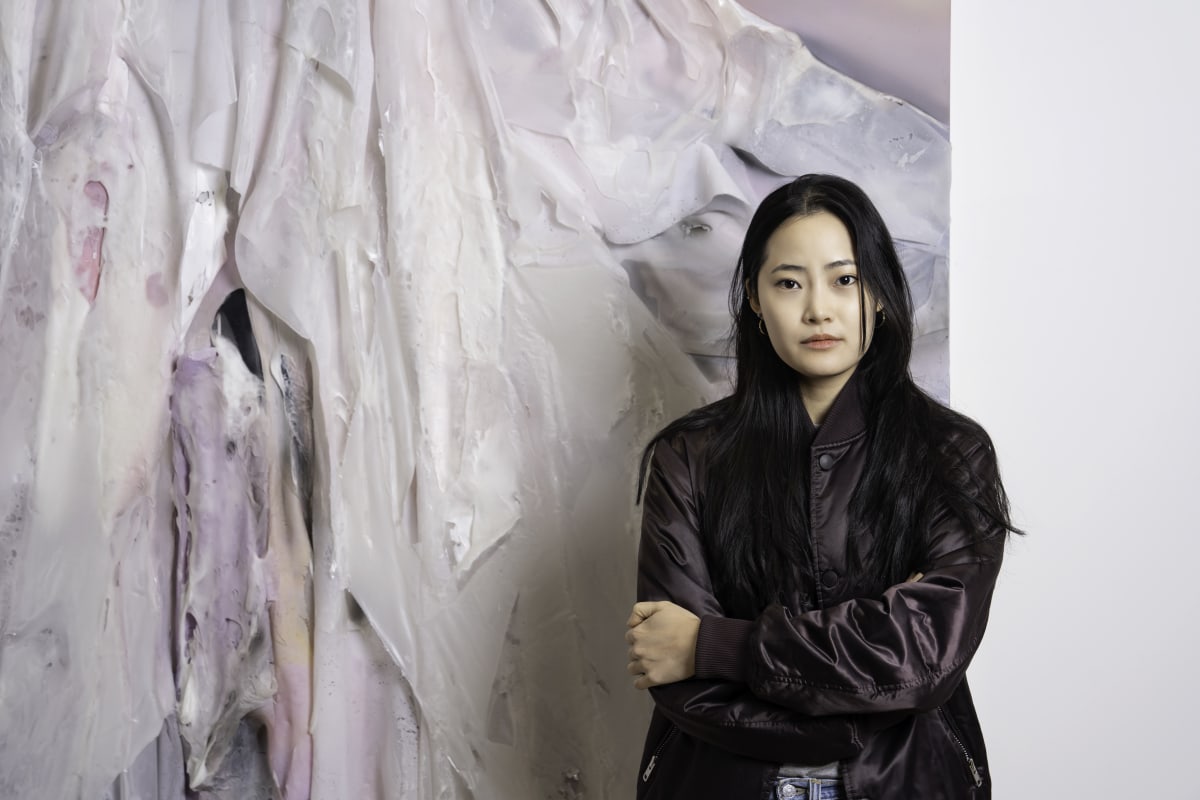In Her Visceral London Debut, Korean Artist Heemin Chung ‘Re-Materializes’ Lost Experiences Up Next
By Katie White
Korean artist Heemin Chung has witnessed the transformation of her home city of Seoul into a technological metropolis over the course of her lifetime. In this buzzing city, the boundaries of night and day no longer exist as they once did. Cell phones, laptop screens, glowing billboards, and streetlights offer a perpetual, humming twilight.
In “Umbra” Chung’s solo debut at Thaddeus Ropac which opens in London today, the rising artist attempts to navigate these contemporary forces, which have “reoriented our experience of life beyond recognizability.” Chung’s new works encompass painting, sculpture, and video work and bridge inspirations from ancient Korean culture with cutting-edge technological processes. The exhibition title “Umbra” references the shadows cast by celestial bodies such as the earth and moon, where darkness still exists. In these new works, Chung seems to argue for the necessity of night, disconnection, and even death.
“There is a traditional play, the Dasiraegi (Rebirth), I have been interested in for years. It’s a melodramatic but simple story of a woman deceiving her husband,” Chung told me from her current residency studio at ISCP in Brooklyn a few weeks ago. “Her husband is blind. The woman falls in love with a monk and has a child.” The play, Chung explained, is typically performed as part of the Korean funerary ritual called the Chobun. “The possibility of new life and laughter and profane jokes are all part of this mourning process,” said Chung. “Life and death coexist.”
For her London show, Chung has reimagined this darkly comic play in a series of multimedia sculptures incorporating video which retell this story in two timelines—one of her childhood and the other, a day in the life of her grandfather. These sculptures are presented on a stage-like LED platform that echoes this sense of theatricality.
The show also includes new paintings; Chung’s paintings are made through a unique digital-meets-traditional process she first developed in 2017. To make her works, the artist translates images she’s found on the Internet or photographed herself into 3-D prints made in a gel material. In their 3-D printed iteration, these images are desaturated from their hues and become shadow visions of themselves. Chung drapes and folds these membranes into sculptural, veil-like surfaces.


















































































































































































